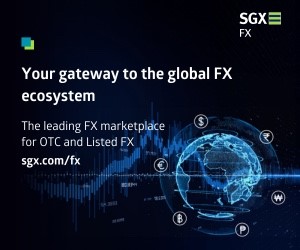Hedge Funds’ Market Impact Greater Than Other Customers: Study
Posted by Colin Lambert. Last updated: May 3, 2024
A new study published by the Swiss National Bank empirically backs what most FX traders could tell you – that hedge fund flow tends to have more market impact and is generally “smarter”.
The study, authored by Jessica Gentner, who works at the SNB investigates hedge fund flow in the Swiss franc market and finds that a CHF 1 billion trade typically moves the market 0.4%, although it does stress that the impact is largely limited to the day of trading, rather than having a prolonged effect.
Although the author says that hedge funds “secure superior trading prices compared to other investors, who may be less price-sensitive”, what she is effectively saying is their timing is better, rather than they get “better” pricing from their LPs. As a comparison, Gentner observes that asset managers, trading CHF 1 billion, get a market impact of 0.06%.
This should lead through to the observations made by the author, notably, traders are more reluctant to warehouse risk from a smarter, well-informed, hedge fund, than they are a hedger like an asset manager or a corporate. Historically, once they have cleared the risk of the original trade, dealers have often opted to “go with” the hedge fund, using the information (legally) to inform their own trading. This in turn, will increase the market impact.
In the bigger picture, the study finds that hedge funds outperform other participants in aggregate, with an annualised outperformance of 139bp in USD/CHF, and 40bp in EUR/CHF – this obviously reflects the more volatile nature of the former (January 2015 aside!).
What is interesting in the study, is how the author finds that hedge funds performed better during the Peg period in EUR/CHF, but that in USD/CHF, the opposite is true – hedge funds performed better outside the Peg period. This does indeed suggest, as the author notes, that “the additional market stability and predictability brought about by the minimum exchange rate regime, which was potentially utilised to maximum effect by hedge funds with their sophisticated trading techniques”.
The study uses CLS data, which breaks down volume by counterparty segment, although the author does observe that hedge funds that settle with their prime brokers (a large percentage), are probably missed in the data. Nonetheless Gentner finds enough correlations in the CLS data with that from the Bank for International Settlements, to support her findings.
Overall, news that hedge funds tend to be more influential in FX markets, on a short-term basis at least, will not come as a surprise to most market participants – this has long been the case. What could be prompted by empirical evidence of their impact is a look by LPs into how they interact with their hedge fund clients. There are two approaches that can be taken; firstly, the LP can decide to take more risk when trading with the hedge funds in the hope of making some money off the back of the trade(s) – this is especially important as few LPs suggest they make money out of the original trade, something backed up by Gentner’s analysis.
The second approach is that taken by several LPs according to discussions with The Full FX in recent years – to avoid quoting hedge funds at all, given their mark-outs and the LP’s unwillingness to take on risk. This has been accelerated by the better use of data by LPs to actually measure the value of a hedge fund client across the markets business – no longer can an FX salesperson get away with “we need to quote them because we make money in Rates”, if that is not the case.
The LP-hedge fund relationship has always been a tricky one, with the balance of power very much depending upon the sales model operated by the LP (volume credits generally = more power to the hedge fund). This study puts a number on the impact of the flow, in CHF terms at least, but the main finding, that hedge funds tend to be smarter operators in the FX market, should come as no surprise at all.



